What is CVT Transmission? its working, pros & cons with [PDF]
Introduction to CVT:
As an automotive enthusiast, there’s nothing quite like the thrill of understanding how different components of a car come together to create a seamless driving experience.
Today, we explore into one of the most innovative advancements in transmission technology: CVT (Continuously Variable Transmission). In this comprehensive guide, we’ll explore the ins and outs of CVT transmission, uncover its benefits, and debunk common myths surrounding it.
In an era where efficiency and performance go hand in hand, CVT has emerged as a game-changer. Its unique design and operation allow for smoother gear shifts, improved fuel economy, and enhanced driving comfort.
Whether you’re a student eager to learn or an automotive enthusiast seeking to expand your knowledge, this article will provide you with a deep understanding of CVT transmission.
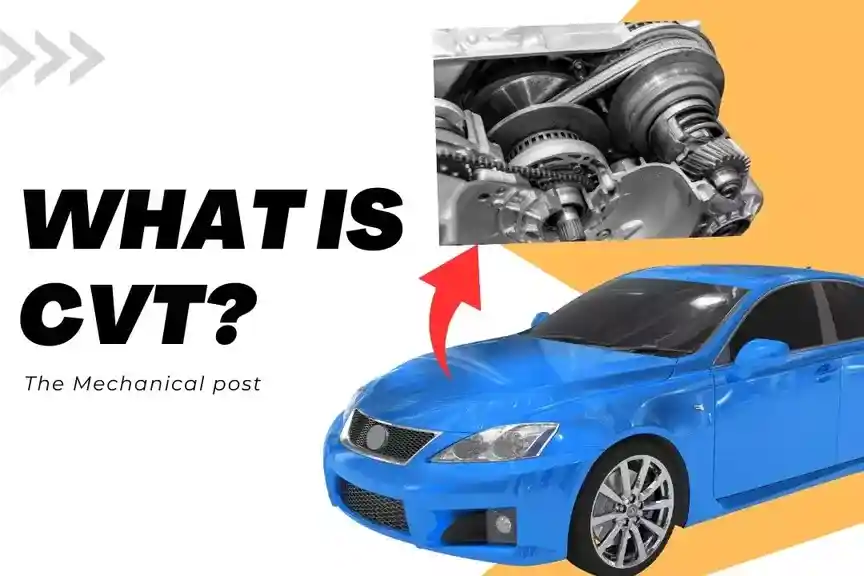
So, buckle up and join us on this exhilarating ride through the world of CVT transmission. From its inner workings to its real-world advantages, we’ve got you covered.
Get ready to be captivated by the wonders of CVT as we unravel its secrets, empowering you to make informed decisions when it comes to your automotive pursuits.
And there’s more for you, as The Mechanical post reader get the Free Downloadable PDF on CVT Transmission later at the end of the article!!
I. What is CVT Transmission?
CVT stands for Continuously Variable Transmission that utilizes a belt-and-pulley system to provide an infinite number of gear ratios, enabling seamless and continuous acceleration. This allows the engine to operate at its most efficient RPM range, improving fuel efficiency and delivering a smooth driving experience.
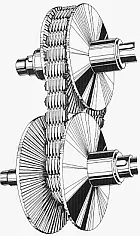
When it comes to automotive transmissions, CVT stands out as a revolutionary technology that has redefined the way we drive. CVT, or Continuously Variable Transmission, offers a seamless and efficient power delivery system that enhances both fuel economy and driving comfort.
CVT operates on a fundamentally different principle than its counterparts. Instead of using fixed gear ratios, CVT utilizes a belt-and-pulley system that offers an infinite number of gear ratios within a specific range.
This means that as you accelerate, the CVT system adjusts the gear ratio continuously to optimize engine performance and fuel efficiency.
By eliminating the need for fixed gear ratios, CVT enables smoother acceleration and eliminates the jerks and shift shocks associated with traditional transmissions. It provides a constant and seamless power delivery, resulting in a driving experience that feels more effortless and refined.
From a technical standpoint, CVT consists of a primary pulley connected to the engine’s output shaft and a secondary pulley connected to the drive wheels. These pulleys are interconnected by a belt, which varies in diameter depending on the desired gear ratio.
The transmission control unit (TCU) constantly monitors various parameters such as engine speed, throttle position, and vehicle speed to determine the optimal gear ratio for any given driving condition.
Stay tuned as we dive deeper into the benefits of CVT transmission in the following sections. From fuel efficiency to improved performance, CVT is a technology worth exploring for any automotive enthusiast or aspiring student of the road.
II. How Does CVT Work?
Now that we have a basic understanding of CVT transmission, let’s take a closer look at how this innovative technology actually works.
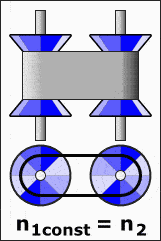
Credits: W.Rebel, CC BY 3.0, via Wikimedia Commons
A CVT works by varying the effective size of the pulleys. When the car needs more power or acceleration, the pulley connected to the engine becomes smaller and the pulley connected to the wheels becomes larger. This reduces the gear ratio and increases the engine speed, giving more power to the wheels.
When the car needs less power or cruising speed, the opposite happens. The pulley connected to the engine becomes larger and the pulley connected to the wheels becomes smaller. This increases the gear ratio and reduces the engine speed, saving fuel and reducing noise.
Unlike traditional transmissions that rely on fixed gears, CVT operates on a continuously variable system.
Think of it as riding a bicycle with gears that adjust automatically based on your pedaling speed and terrain. In CVT, instead of gears, we have two pulleys connected by a belt that changes its effective diameter to create an infinite number of gear ratios.
We highly recommend watching the following animated video on YouTube by Lesics for a comprehensive and visual understanding of working of CVT transmission.
The beauty of CVT lies in its ability to seamlessly adjust gear ratios to suit different driving conditions.
Whether you’re cruising on the highway or tackling uphill roads, the CVT system ensures that the engine operates in its optimal range, delivering a balance of power and efficiency.
CVT truly shines in city driving, where frequent start-stop situations and varying speeds demand flexibility from the transmission. Its ability to seamlessly transition between gear ratios results in improved fuel efficiency and a smoother ride, making traffic jams a little less frustrating.
Let’s understand the CVT with a relatable scenario:
To make it even more relatable, imagine driving uphill in a traditional automatic transmission vehicle. You might experience a lag in acceleration as the transmission downshifts to a lower gear to provide more power.
However, with CVT, the gear ratio smoothly adjusts to maintain constant power delivery, eliminating those abrupt shifts and ensuring a smooth and enjoyable driving experience.
By incorporating relatable examples and comparisons, we hope to make the intricacies of CVT transmission more approachable and enjoyable for automotive enthusiasts of all levels.
But before proceeding further a question might have popped up in you mind, that how is CVT different from traditional Automatic transmission? are they same?
Well, to answer in short, No they are not the same. Discover more about the differences between CVT and Automatic Transmission in our article “CVT vs. Automatic transmission” where answer you query in detail with technical backing.
III. Pros of CVT Transmission:
CVT transmission offers a host of advantages that make it a compelling choice for modern vehicles. From improved fuel efficiency to a smoother driving experience, let’s explore the technical and practical benefits that CVT brings to the table.
1. Improved Fuel Efficiency:
CVT is renowned for its ability to optimize fuel economy. By continuously adjusting the gear ratio to match the engine’s RPM, CVT ensures that the engine operates within its most efficient range, minimizing wasted energy.
As a result, vehicles equipped with CVT transmission often achieve higher miles per gallon (MPG) compared to those with traditional automatic or manual transmissions.
2. Smooth Driving Experience:
CVT transmission excels in delivering a smooth and seamless driving experience. Unlike traditional transmissions that shift gears with noticeable jolts or pauses, CVT provides uninterrupted power delivery.
Acceleration feels effortless and consistent, without the need for traditional gear changes. This not only enhances driving comfort but also reduces noise and vibration levels.
3. Improved Performance:
CVT transmission offers benefits for both economy-focused and performance-oriented driving styles. The continuous gear ratio adjustments enable the engine to maintain optimal power and torque delivery, allowing for quick acceleration when needed.
4. Versatility and Adaptability:
CVT transmission’s ability to adapt to different driving conditions is a significant advantage. Whether you’re navigating steep inclines, cruising on the highway, or driving in heavy traffic, CVT seamlessly adjusts to provide the optimal gear ratio for each situation.
This versatility enhances both performance and efficiency, making CVT-equipped vehicles versatile companions for a wide range of driving scenarios.
Here’s something we discovered that you might be interested in:
1. Types of Car engines
2. Different types of car body styles with names
3. Types of sensors in cars with function and location
5. Compact and Lightweight Design:
CVT transmissions are generally more compact and lighter compared to traditional automatic transmissions, which can contribute to improved fuel efficiency and overall vehicle weight reduction. This design advantage can have a positive impact on the vehicle’s handling and maneuverability.
6. Constant Power Flow:
With CVT, there is no interruption or loss of power during gear changes. The continuous and seamless power flow ensures a consistent and efficient transfer of power from the engine to the wheels, resulting in enhanced overall performance.
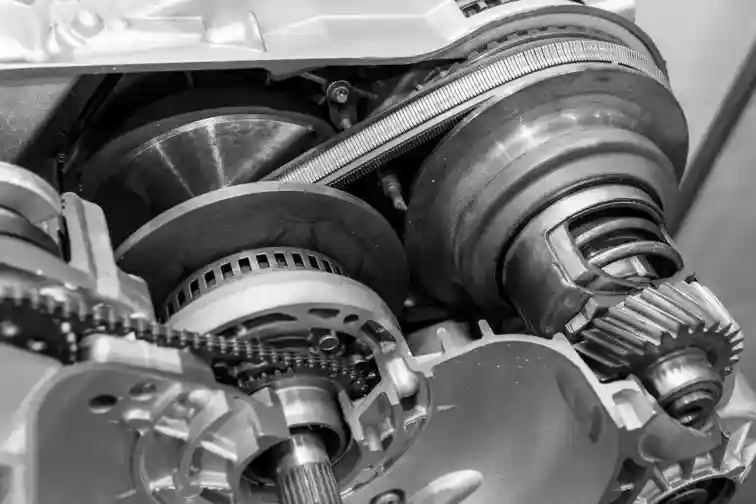
IV. Cons of CVT Transmission:
While CVT transmission offers numerous benefits, it’s important to know that every technology has its limitations. Let’s explore some of the inherent limitations of CVT transmission in a technical context.
1. Belt Wear and Potential Failure:
CVT transmissions rely on belts for power transmission. Excessive stretching or wear of these belts can lead to a loss of tension, resulting in reduced power delivery and potential transmission failure. Regular maintenance and timely belt replacement are crucial to mitigate this risk.
2. Limited Connection between Accelerator and Engine:
One common criticism of CVT transmissions is the perceived lack of direct connection between the accelerator pedal and engine response. Unlike traditional transmissions with fixed gears, CVTs smoothly adjust gear ratios without distinct shift points, which can result in a less engaging and connected driving experience for some enthusiasts.
3. Power and Size Limitations:
CVTs may have limitations in terms of the engines they can effectively handle in terms of power and size. High-performance or larger engines may put excessive strain on CVT components, affecting their durability and longevity. As a result, CVTs are often more prevalent in compact to midsize vehicles where power demands are typically lower.
4. Durability and Lifespan:
While CVT technology has improved significantly, some concerns remain regarding their long-term durability compared to conventional transmissions. Factors such as belt wear, component stress, and overall maintenance can impact the lifespan of a CVT transmission. Regular maintenance, including fluid changes and inspections, is crucial to extend the transmission’s life.
5. Complexity of Maintenance and Repair:
Working on CVT transmissions requires specialized knowledge and tools, making basic maintenance and repairs more challenging. Routine maintenance tasks often need to be carried out by trained mechanics familiar with CVT systems. This complexity can increase the cost and inconvenience associated with servicing CVT-equipped vehicles.
V. Gear Ratio of CVT transmission:
CVT transmission utilizes a belt-and-pulley system to achieve an infinite number of gear ratios. The gear ratio in CVT is determined by the effective diameters of the pulleys connected by the belt.
The gear ratio (GR) in a CVT can be calculated using the formula:
GR = D₂ / D₁
where:
D₂ = the diameter of the driven pulley (connected to the wheels) and
D₁ = the diameter of the driving pulley (connected to the engine).
Does CVT have infinite gear ratio?
Yes, in CVT, the effective diameter of the pulleys can be continuously varied, allowing for an infinite number of gear ratios. By adjusting the positions of the pulleys and the tension of the belt, the CVT system can optimize the gear ratio based on the vehicle’s speed, engine RPM, and driving conditions.
The ability to achieve infinite gear ratios in CVT offers several advantages. It allows the engine to operate at its most efficient RPM range for a given driving condition, maximizing fuel efficiency.
Additionally, the continuous adjustment of gear ratios enables smooth and seamless acceleration, eliminating the need for traditional gear changes and resulting in a refined driving experience.
By continuously adapting the gear ratio to match the engine’s RPM and the desired power output, CVT transmission optimizes both performance and efficiency across a wide range of driving conditions.
The infinite gear ratio capability of CVT sets it apart from traditional transmissions, providing a flexible and adaptable power delivery system.
VI. Cars with CVT Transmission
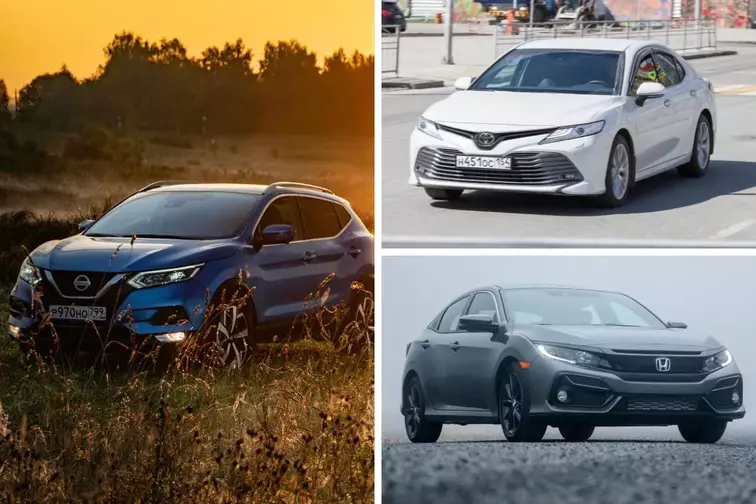
CVT transmissions have gained popularity across various automotive brands and vehicle types. While the availability of CVT varies by model, here is a list of several well-known vehicles that have been offered with CVT transmissions:
- Nissan Altima
- Honda Civic
- Toyota Corolla
- Subaru Outback
- Mitsubishi Outlander
- Hyundai Accent
- Ford Escape (Hybrid variant)
- Hyundai Elantra
- Kia Forte
- Toyota Avalon Hybrid,
- Toyota C-HR,
- Toyota Camry Hybrid
CVT Transmission system is also used in scooters (2-wheelers) that are automatic, i.e. without gear scooters.
Please note that the availability of CVT transmissions can vary by model year and trim level within each brand. It is always recommended to check with the specific manufacturer and model specifications for the most up-to-date information on CVT transmission options.
VII. Key Takeaways for CVT Transmission:
- CVT, or Continuously Variable Transmission, utilizes a belt-and-pulley system to achieve an infinite number of gear ratios, allowing for seamless acceleration and optimal engine performance.
- The gear ratio in CVT is determined by the effective diameters of the pulleys connected by the belt, and it can be calculated using the formula: GR = D₂ / D₁, where D₂ is the diameter of the driven pulley and D₁ is the diameter of the driving pulley.
- The ability to achieve infinite gear ratios in CVT offers benefits such as improved fuel efficiency by allowing the engine to operate at its most efficient RPM range.
- CVT provides a smooth and seamless driving experience as it eliminates the need for traditional gear changes, resulting in uninterrupted power delivery and refined acceleration.
- CVT transmission’s continuously variable gear ratios adapt to different driving conditions, making it versatile and well-suited for a wide range of scenarios, from city driving to highway cruising.
- CVT transmissions may have limitations, such as power handling capacity and the potential for belt wear and slippage, which can impact high-performance or heavy-duty applications.
- Ongoing advancements in CVT technology aim to address these limitations, improve reliability, and enhance overall performance, making CVT transmissions increasingly efficient and reliable choices for modern vehicles.
VIII. Conclusion:
In conclusion, CVT transmission stands as a remarkable technological advancement in the automotive industry. While CVT transmission has its limitations, ongoing research and development are addressing these concerns, paving the way for further advancements in the field.
In the ever-changing landscape of the automotive industry, CVT transmission continues to shape the way we drive and experience vehicles. Its fuel efficiency gains, smooth operation, and adaptability to various driving conditions make CVT an attractive choice for those seeking a balance between performance and economy.


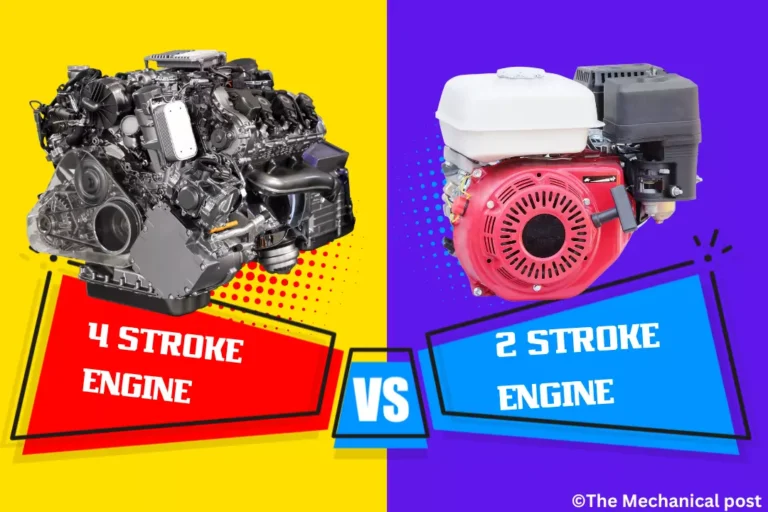
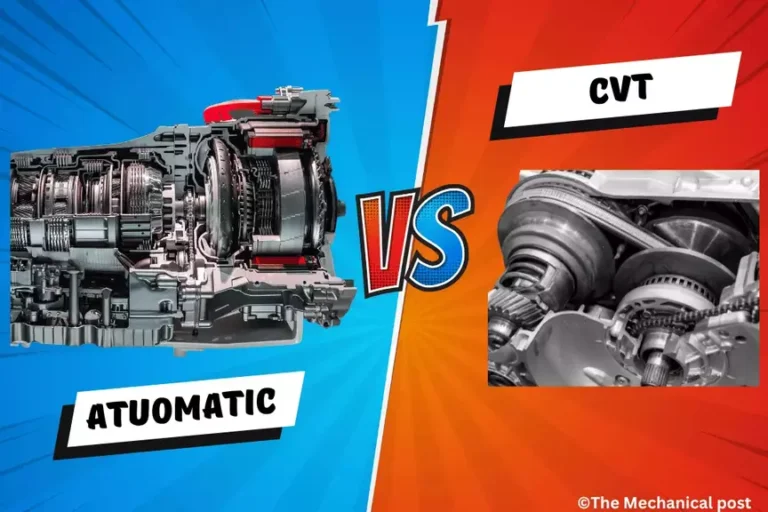
![25+ Different Types of Car engines explained [with PDF]](https://mechanicalpost.site/wp-content/uploads/2021/09/Different-Types-of-Engines.png)
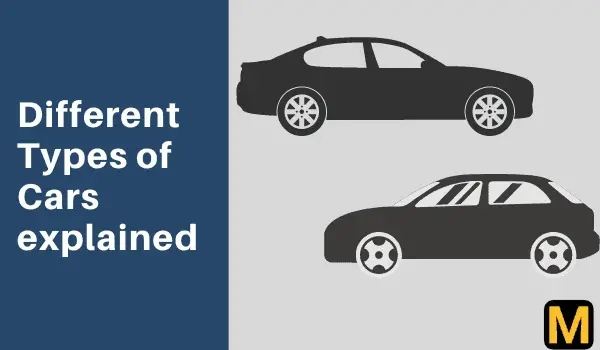
![Disc vs drum brakes: What is the difference? [with PDF]](https://mechanicalpost.site/wp-content/uploads/2021/09/Disc-brakes-vs-drum-brakes.png)
